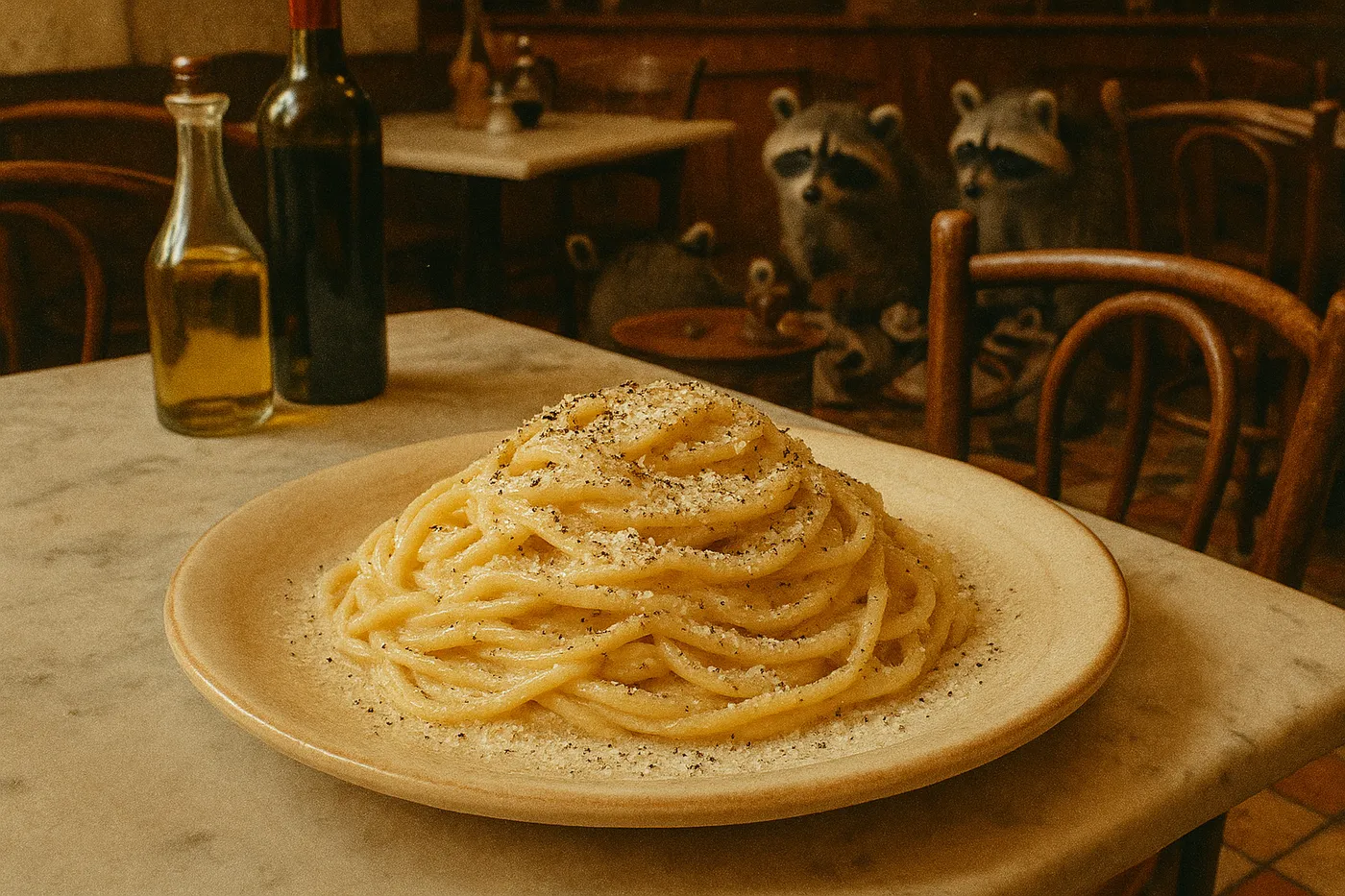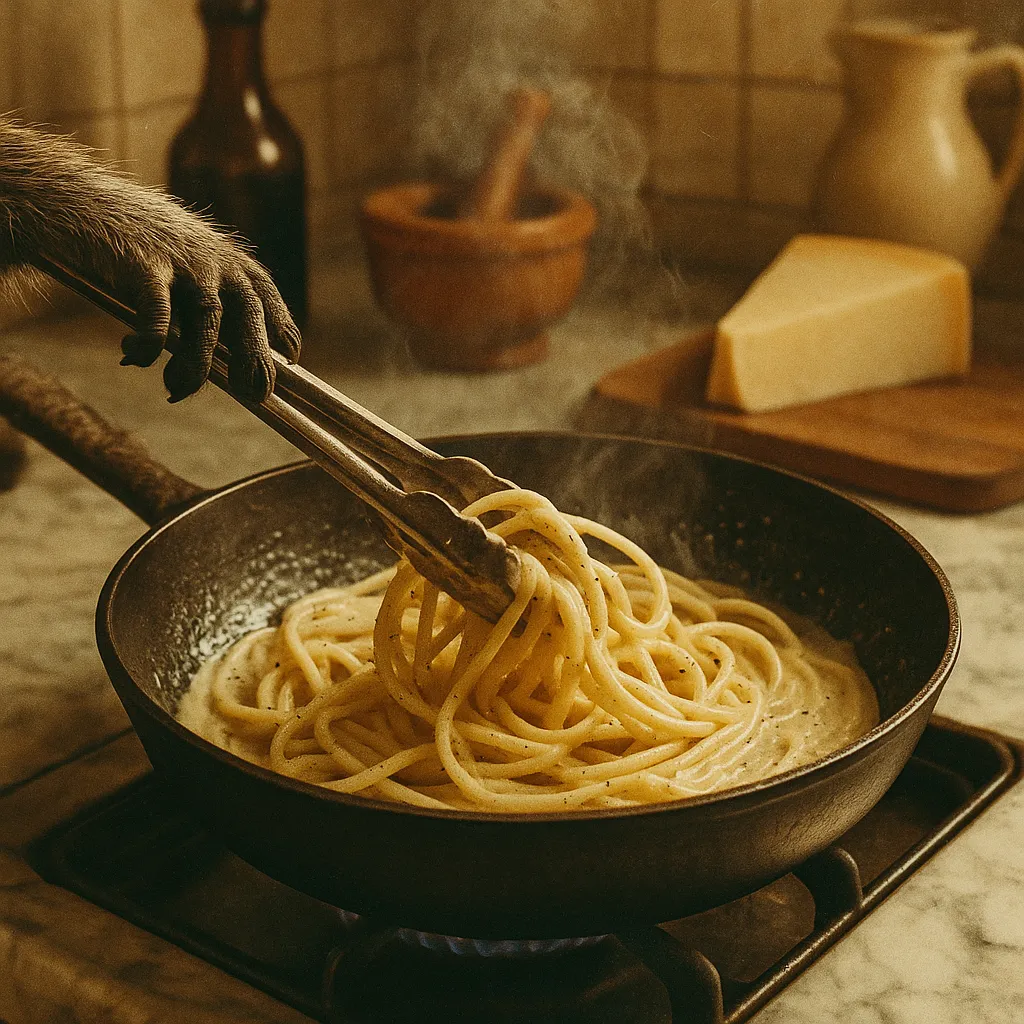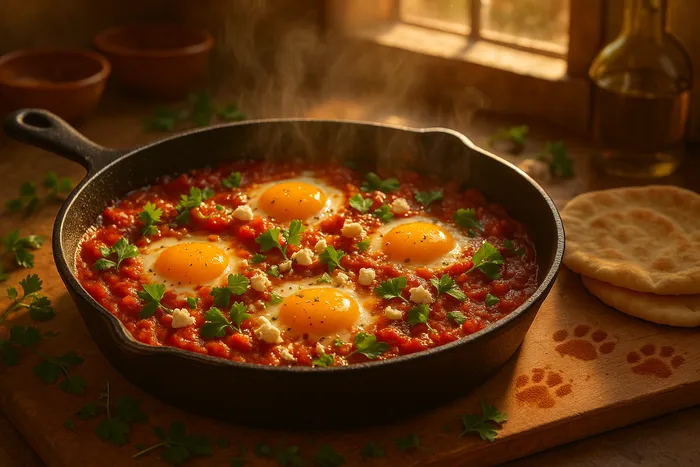
Cacio e Pepe is Italian cooking stripped to its essence—pasta, cheese, pepper, and pasta water transformed through technique into something that tastes like much more than the sum of its parts. This is Rome's gift to anyone who thinks simplicity means easy, because while the ingredient list is short, the execution demands precision, timing, and respect for temperature that separates good cooks from great ones.
The magic happens in the emulsification—hot pasta water and grated cheese must come together at exactly the right temperature to create a creamy sauce without scrambling the cheese or creating a clumpy mess. It's alchemy disguised as simplicity.
Ingredients
🍝 1 pound spaghetti or tonnarelli
🧂 Kosher salt for pasta water
🧀 2 cups Pecorino Romano cheese, finely grated (plus extra for serving)
🌶️ 2-3 teaspoons freshly cracked black pepper
🫒 2 tablespoons extra-virgin olive oil (optional, for insurance)
Critical Temperature Control
timeline
title Cacio e Pepe Temperature Management
"0:00" : Boiling water - pasta cooking
"0:08" : Medium heat - toast pepper
"0:10" : Simmering - pasta water + pepper
"0:12" : Add hot pasta - toss vigorously
"0:13" : OFF HEAT - crucial moment
"0:14" : Add cheese gradually - constant motion
"0:16" : Adjust with pasta water - still off heat
"0:18" : Serve immediately - before cooling
Instructions
Prepare everything first. Grate the Pecorino Romano very finely—this is crucial for smooth emulsification. Crack black peppercorns coarsely or use a pepper mill on the coarsest setting. Have everything ready before you start cooking.
Boil pasta in minimal water. Bring a large pot of water to boil—use less water than usual (about 6 cups for 1 pound pasta) to create more concentrated starch in the pasta water. Salt generously.
Toast the pepper. While water heats, toast the cracked black pepper in a large skillet or pan over medium heat for 1-2 minutes until fragrant. This deepens the pepper flavor significantly.
Cook pasta to perfection. Add pasta to boiling water and cook until just shy of al dente (about 1 minute less than package directions). The pasta will finish cooking in the pan with the cheese.
Reserve pasta water generously. Before draining, reserve at least 2 cups of the starchy pasta cooking water. This is your emulsification agent—don't skip this step.
Create the base. Add about 1/2 cup of hot pasta water to the pan with the toasted pepper. Bring to a gentle simmer.
Add pasta to the pan. Transfer the slightly underdone pasta directly to the pan with the pepper and pasta water. Toss vigorously to finish cooking and coat with the starchy water.
The critical moment. Remove the pan from heat. Add the grated Pecorino Romano gradually while tossing constantly with tongs. The residual heat and starchy water should melt the cheese into a creamy sauce, not clumps.

Adjust consistency. Add more pasta water as needed to achieve a silky, creamy consistency that coats each strand of pasta. The sauce should be loose enough to flow but thick enough to cling.
Serve immediately. Transfer to warmed bowls and serve immediately with additional grated Pecorino Romano and black pepper. Don't let it sit—the sauce can break or become gluey.
Technique Notes
Temperature control is everything. The pan should be off the heat when adding cheese to prevent it from seizing and becoming grainy.
The pasta water should be starchy enough to help create the emulsion—under-salted or too-diluted pasta water won't work as well.
Constant motion while adding cheese is crucial. Stop stirring and you risk breaking the sauce.
Troubleshooting
If the sauce breaks: Add a splash of hot pasta water and whisk vigorously off the heat to re-emulsify.
If it's too thick: Add pasta water one tablespoon at a time while tossing.
If it's too thin: Add more grated cheese while tossing vigorously.
If cheese clumps: The pan was too hot. Start over—there's no fixing clumpy cheese.
Equipment Notes
Use a large, wide pan to maximize surface area for tossing and evaporation control.
Tongs work better than a spoon for the constant tossing motion required.
Pre-warm serving bowls to keep the pasta hot longer.
The Roman Way
In Rome, this dish is made with tonnarelli (square spaghetti) or spaghetti, never with short pasta.
Authentic versions use only Pecorino Romano, not Parmesan. The sheep's milk cheese has a sharper, more complex flavor.
Romans never add cream, butter, or olive oil to Cacio e Pepe—though a tiny bit of olive oil can help novice cooks achieve emulsification.
Timing Strategy
This dish must be served immediately. Have your diners seated and ready before you start the final assembly.
Consider making a smaller batch first to practice the technique before attempting to serve guests.
The entire process from adding pasta to pan to serving should take no more than 3-4 minutes.
Remix Ideas
Cacio e Pepe risotto: Apply the same technique to risotto for a creamy rice version.
Vegetable additions: Traditionalists will object, but wilted spinach or peas can work.
Protein version: Add pancetta or guanciale for a heartier dish (though purists will cry).
Different cheeses: Try aged Grana Padano for a milder version.
Perfect Cacio e Pepe should make you understand why Italian cooking is revered—it's proof that technique matters more than ingredients, that simplicity requires mastery, and that the most memorable dishes often have the shortest ingredient lists. This is Rome on a plate: confident, essential, and utterly satisfying when done right.









